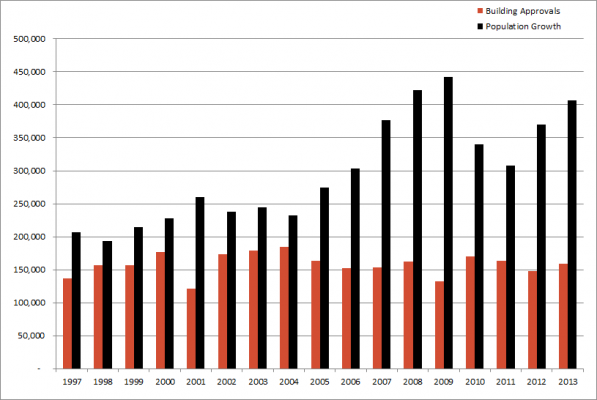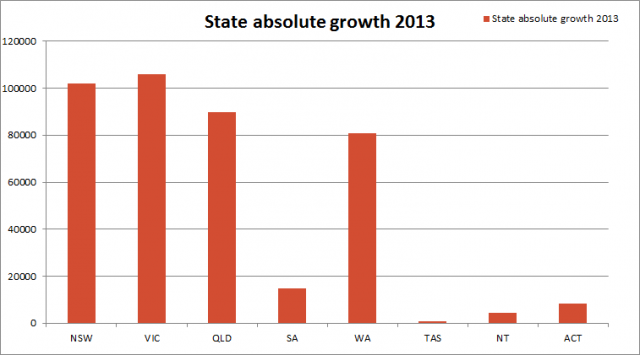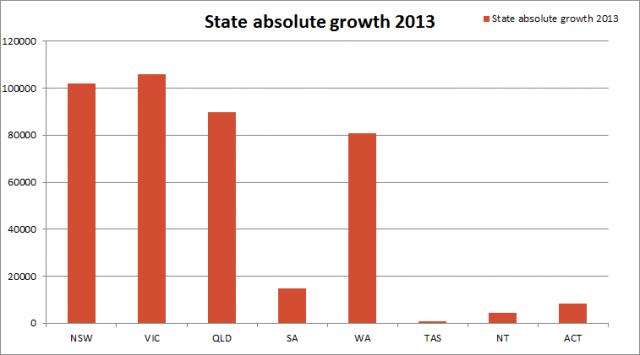The ABS has just released the financial year 2012-13 population growth figures and they show that the nation continues to grow at an increasing rate. The last 7 years have all shown growth at above the long-term trend, but after some moderate declines in the rate of growth during the 2009-10 and 2010-11 financial years, 2012 and 2013 have shown an increasing trend once more. Australia’s population in June 2013 was 23,130,900 and grew by 407,000 people in the previous 12 months, only just short of the record 2008 and 2009 figures.

National growth – driven by migration
This chart tells the story of Australia’s growth for the past 16 years. After averaging about 200-250,000 per year through the 1990s and early 2000s, Australia’s population growth shot up from around 2006 onwards, and has been above 300,000 per year ever since.
The chart also shows that regardless of population growth, we build about 150-160,000 new dwellings every year.

In line with recent years, about 40% of this growth is due to “natural increase” – that is the excess of births over deaths. The remaining 60% is due to net overseas migration – the excess of people entering the country long-term over those leaving.
Contrary to the high profile media reports which focus on asylum seekers, most of our migration is through a formal settlement programme, skilled workers visas and family reunion, as well as some refugee intake. The number of asylum seekers arriving in the past year (when the numbers have been particularly high) would make up less than 4% of this migration figure, if all were granted residency. The number arriving by boat is about half that. More on this in a future blog.
State growth
In absolute terms, very similar numbers of people were added to NSW, Vic, Qld and WA – with the largest numerical increase in Victoria, adding 106,000 people. There is a lot of talk about when Melbourne will overtake Sydney, and although there isn’t a capital city breakdown in the latest release, on current trends this now looks like being before 2040. However it will be much much longer before Victoria overtakes NSW, as the states are adding very similar numbers of people each year. Regional NSW is far more populous than Regional Vic.

In percentage terms, however, the growth rate of Western Australia outpaces all the others by a very long way. WA is adding 3.3% per year, and the way it’s going, it’s not just Melbourne that will overtake Sydney – Perth may overtake both cities! But not until about 2080 on current trends.

Another interesting feature of the state growth chart is that the ACT is now growing faster than Queensland.
Tasmania’s growth rate, never particularly high, had picked up in the early 2000’s but has almost stalled again. It added only 800 people in 2013, and about 4,000 in the last 3 years combined, after growing by 22,000 in the 5 years before that. Most of this is due to significant loss of population through migration to the mainland.
All these population trends are part of .id’s demographic briefing series, which is included at no extra cost to all our council clients on an annual basis. The demographic briefing looks at how macro population trends are affecting your area, and what communities you will need to plan for in the future. To book your demographic briefing, please contact .id.
Visit our demographic resource centre if you would like more information about the population characteristics of Australia. You may also wish to subscribe to our newsletter so that we can keep you updated on the latest demographic trends in Australia.















